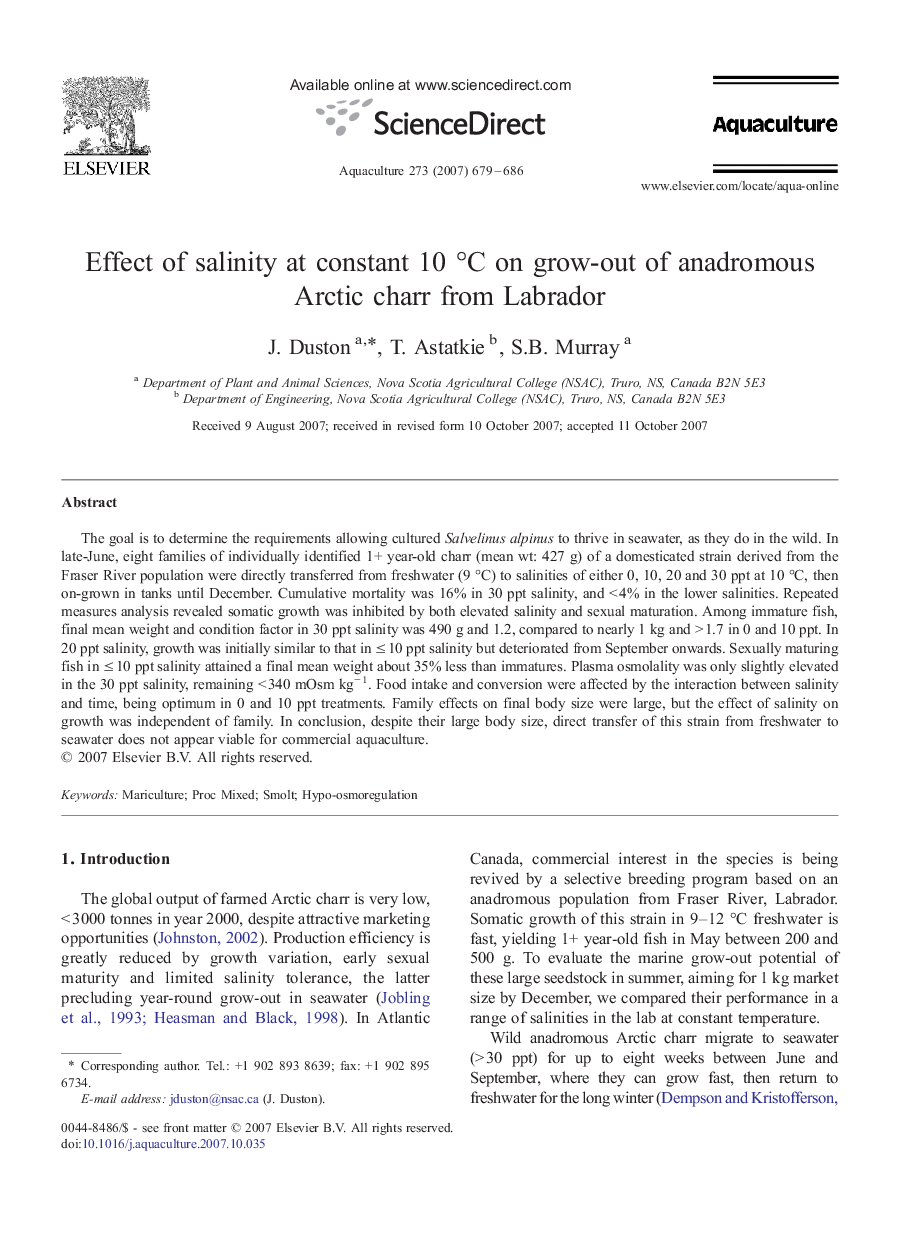| Article ID | Journal | Published Year | Pages | File Type |
|---|---|---|---|---|
| 2424791 | Aquaculture | 2007 | 8 Pages |
The goal is to determine the requirements allowing cultured Salvelinus alpinus to thrive in seawater, as they do in the wild. In late-June, eight families of individually identified 1+ year-old charr (mean wt: 427 g) of a domesticated strain derived from the Fraser River population were directly transferred from freshwater (9 °C) to salinities of either 0, 10, 20 and 30 ppt at 10 °C, then on-grown in tanks until December. Cumulative mortality was 16% in 30 ppt salinity, and < 4% in the lower salinities. Repeated measures analysis revealed somatic growth was inhibited by both elevated salinity and sexual maturation. Among immature fish, final mean weight and condition factor in 30 ppt salinity was 490 g and 1.2, compared to nearly 1 kg and > 1.7 in 0 and 10 ppt. In 20 ppt salinity, growth was initially similar to that in ≤ 10 ppt salinity but deteriorated from September onwards. Sexually maturing fish in ≤ 10 ppt salinity attained a final mean weight about 35% less than immatures. Plasma osmolality was only slightly elevated in the 30 ppt salinity, remaining < 340 mOsm kg− 1. Food intake and conversion were affected by the interaction between salinity and time, being optimum in 0 and 10 ppt treatments. Family effects on final body size were large, but the effect of salinity on growth was independent of family. In conclusion, despite their large body size, direct transfer of this strain from freshwater to seawater does not appear viable for commercial aquaculture.
